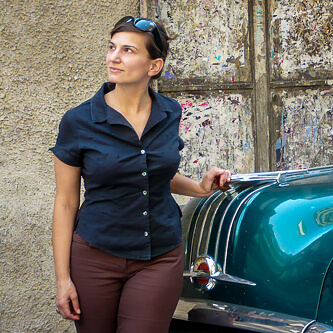Sumaya Agha is a freelance photographer based in Portland, OR, who began documenting the Syrian refugee crisis over four years ago in Jordan and Europe. She is of Syrian descent with many aunts, uncles, and cousins still living in Damascus. Sumaya holds a BS in Applied Art and Design with a concentration in Photography from Cal Poly State University in San Luis Obispo, CA and an MPA from Middlebury Institute of International Studies. Her worked appeared in the Huffington Post, BBC Focus on Africa, Forbes Africa, and NPR.org, and she was a still photographer for the Academy Award winning film “The Fog of War.” She has lived in Syria, Liberia, and the United States.
Watching from afar as civil war ripped apart Syria, I felt compelled to help the refugees whose lives have been destroyed by the conflict. And with dozens of close relatives enduring the horrors in their hometown of Damascus, I had a personal connection to the crisis. I moved to Amman, Jordan in 2012 and began working as a photographer for humanitarian organizations helping mitigate the crisis that had spilled over from neighboring Syria.
While in Jordan, I spent many days in the refugee camps and host communities, getting to know countless families living there and documenting their substandard living conditions. I heard myriad stories of heartbreaking loss and brutality and enduring spirit, and found that hopelessness is pervasive among the young, as they cannot see a future for themselves.
In January 2016 I went on assignment to Macedonia and Serbia to photograph the refugees migrating through the Balkans. Throughout the freezing winter, 2,200 refugees per day crossed into Serbia. Up to 10,000 a day crossed in warmer months. They came from Afghanistan, Iraq, and Syria, from a wide range of socioeconomic backgrounds, including many families with young children. The typical journey went like this: flee their home country, take a perilous raft ride from Turkey to Greece, and then move onward through foreign lands in search of a peaceful home.
Now that the Balkan borders are closed to refugees, thousands are stranded in Eastern Europe, hoping to be relocated to Western Europe. More than 60,000 refugees are in camps throughout Greece, including Ritsona Refugee Camp, where I went on assignment in July to document the crisis.
With no end in sight to the conflict in Syria and elsewhere, the refugee crisis is certain to continue right along with it. That means millions of regular people continuing to seek safety and some sense of normalcy in the absence of peace.
